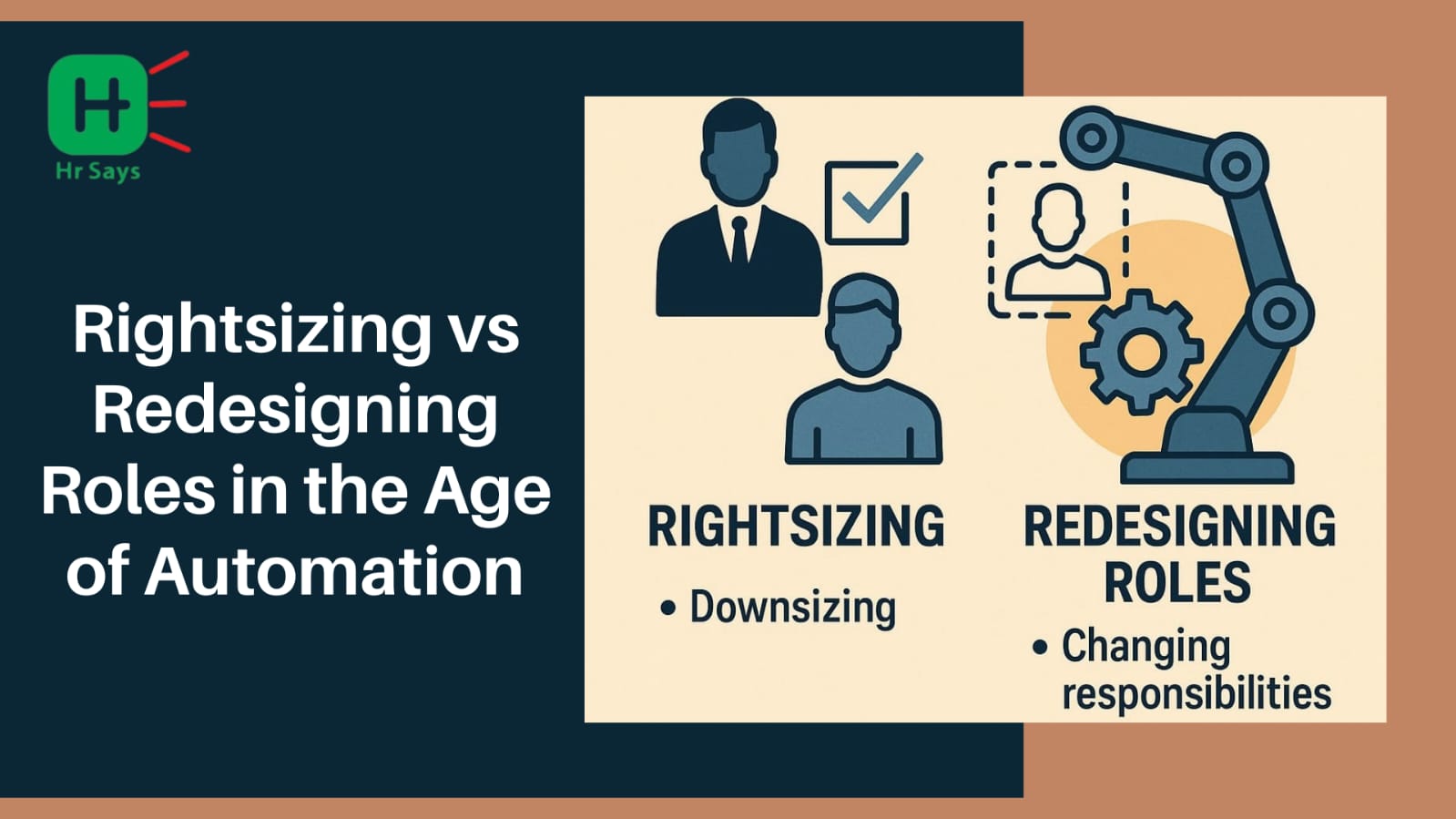Is trimming the workforce the only way forward in the age of machines? With the development of automation, a set of companies is now at the critical point to either cut positions or reinvent them. It is not always clear. Still, what is evident is this companies need to do something. And rightly do.
The barometer effect or Automation effect
The invisible force redefining the present-day job
It is not a case of automation in the future, but it is now happening. In the world of retail, and even finance, bots and AI systems are taking care of human-hours of work. With machines taking over repetitive work, the question arises: what happens to people?
● Repetitive roles are being replaced
● AI tools are faster and more accurate
● Costs are cut—but so are human contributions
Yet, replacing doesn’t always mean removing. It could mean refocusing.
Rightsizing: A Quick Fix or Long-Term Risk?
Trimming to survive—but at what cost?
Rightsizing is often the first response. It sounds strategic. It feels neat. But it’s not always the smartest move.
● Eliminates surplus roles
● Reduces immediate costs
● Aims for leaner operations
But here’s the catch:
The wrong cuts today can lead to capability gaps tomorrow. Layoffs may free up funds, but they also drain experience. Morale takes a hit. So does innovation.
Redesigning Roles: Shifting People, Not Letting Go
A better way to evolve with tech
Redesigning means keeping talent, just differently. Instead of cutting jobs, companies reimagine
them. A data entry executive becomes a data analyst. A warehouse picker turns into a robot
supervisor.
● Upskilling replaces layoffs
● Roles evolve to complement automation
● Talent is preserved, not discarded
This path is slower. But it’s smarter. And it builds long-term value.
Where Most Go Wrong
Following the hype, ignoring the heart
Too often, companies rush to reduce headcount. Why? Because it's easy to measure. But what
they miss is the human cost.
Mistakes to avoid:
● Treating automation as replacement, not support
● Ignoring internal capabilities
● Failing to communicate the ‘why’ behind changes
Striking the Right Balance
Not every role can be redesigned. Not every one should be cut. Balance is key.
What works:
● Audit roles based on future relevance
● Invest in reskilling programs early
● Involve teams in redesign conversations
Remember, automation isn’t a threat. It’s a tool. And tools serve best when placed in skilled
hands.
Conclusion
The future of work isn't about losing jobs. It’s about changing them. Rightsizing might offer quick relief. But redesigning roles builds resilience. The era of automation means it is not how to do more with less it is how to do better with what you have.

 Automation has led to the emergence of the era of a shift in workforce strategy in businesses. Are downsizing companies the solution, or is it the time to re-innovate positions?
Automation has led to the emergence of the era of a shift in workforce strategy in businesses. Are downsizing companies the solution, or is it the time to re-innovate positions?












.jpeg)
.jpeg)

.jpeg)

.jpeg)


.jpeg)

.jpeg)

.jpeg)


